Systematic Mapping of Scientific Production on Open Innovation (2015–2018): Opportunities for Sustainable Training Environments
Abstract
1. Introduction
2. Materials and Methods
2.1. Definition of Scope and Objective (Research Questions)
2.2. Inclusion and Exclusion Criteria
2.3. Identification of the Databases and Search Terms
2.4. Extraction of the Articles through Database Searches
2.5. Creation of a Classification Scheme
3. Results
3.1. RQ1 How Many Studies Are in the WOS and Scopus Databases from 2015 to 2018?
3.2. RQ2: Who Are the Most Cited Authors?
3.3. RQ3: What Is the Geographical Distribution of the Authors?
3.4. RQ4: What Are the Journals with More Publications on This Line of Research?
3.5. RQ5: In What Contexts Are These Studies Developed?
3.6. RQ5: What Are the Main Topics Addressed in This Line of Research?
4. Discussion
Author Contributions
Funding
Acknowledgments
Conflicts of Interest
Appendix A
References
- UNESCO. Transforming our world: The 2030 agenda for sustainable development. In Proceedings of the Resolution adopted by the General Assembly, Paris, France, 25 September 2015. [Google Scholar]
- OECD. Open Innovation in Global Networks; OECD Publications: Paris, France, 2008; pp. 1–5. ISBN 978-92-64-04767-9. [Google Scholar]
- Greco, M.; Grimaldi, M.; Cricelli, L. Open innovation actions and innovations performance. Eur. J. Innov. Manag. 2013, 18, 150–171. [Google Scholar] [CrossRef]
- Chesbrough, H. Open innovation: A new paradigm for understanding industrial innovation. In Open Innovation Researching a New Paradigm, 2nd ed.; Chesbrough, H., Vanhaverbeke, W., West, J., Eds.; Oxford University Press: Oxford, UK, 2008; Volume 2, pp. 21–33. ISBN 978-0-19-929072-7. [Google Scholar]
- Gassmann, O.; Enkel, E.; Chesbrough, H. The future of open innovation. R. Manag. 2010, 40, 213–221. [Google Scholar] [CrossRef]
- Remon, D. Innovation ouverte et capacités dynamiques: Préparation à la collaboration internationale des PME. Innovations 2012, 3, 71–98. [Google Scholar] [CrossRef]
- Chesbrough, H. Open innovation: Where we’ve been and where we’re going. Res. Technol. Manag. 2012, 55, 20–27. [Google Scholar] [CrossRef]
- Laine, K.; Leino, M.; Pulkkinen, P. Open innovation between higher education and industry. J. Knowl. Econ. 2015, 6, 589–610. [Google Scholar] [CrossRef]
- Obea Research Group. Innovación Abierta, Más Allá de la Innovación Tradicional, 1st ed.; Mondragon Unibertsitatea: Mondragón, Spain, 2009; pp. 32–54. [Google Scholar]
- Loilier, T.; Tellier, A. Que faire du modèle de l’innovation ouverte? J. Fr. Manag. 2011, 1, 69–85. [Google Scholar] [CrossRef]
- Ramírez-Montoya, M.S.; García-Peñalvo, F.J. Co-creation and open innovation: Systematic literature review. Comunicar 2018, 26, 9–18. [Google Scholar] [CrossRef]
- West, J.; Salter, A.; Vanhaverbeke, W.; Chesbrough, H. Open innovation: The next decade. Res. Policy 2014, 43, 805–811. [Google Scholar] [CrossRef]
- Užienė, L. Open Innovation, Knowledge Flows and Intellectual Capital. Proc. Soc. Behav. Sci. 2015, 213, 1057–1062. [Google Scholar] [CrossRef]
- Calderón, M.G. El valor estratégico de los acuerdos de colaboración para la adquisición de conocimiento en innovación abierta. Un análisis del sector de las TIC en España. Cdor. Y Adom. 2010, 55, 41–64. Available online: http://www.scielo.org.mx/scielo.php?script=sci_arttext&pid=S0186-10422010000300003&lng=en&tlng=en (accessed on 7 February 2019).
- Muñoz, M.; Santoyo, V.H. Del extensionismo a las redes de innovación. In Del Extensionismo Agrícola a las Redes de Innovación Rural, 1st ed.; Santoyo, V.H., Ed.; Universidad Autónoma Chapingo: Ciudad de México, México, 2010; pp. 31–71. ISBN 978-607-12-0143-0. [Google Scholar]
- Rey, G.A. Hibridación, globalización y redes sociales: ‘cazar conexiones’ es el nuevo reto de los temas de vigilancia y gestión del conocimiento. In Proceedings of the Visio, San Sebastían, España, 18–19 October 2007; Available online: https://amaliorey.com/wp-content/uploads/2008/12/hibridacion-globalizacion-y-redes-sociales-impacto-en-los-sistemas-de-vt-y-gc-conferencia-visio1.pdf (accessed on 7 February 2019).
- Bergema, K.; Kleinsmann, M.; Valkenburg, R. Exploring collaboration in a networked innovation project in industry. In Proceedings of the 18th International Conference on Engineering Design (ICED 11), Impacting Society through Engineering Design Design Organisation and Management, Copenhagen, Denmark, 15–19 August 2011; Available online: https://www.designsociety.org/publication/30509/exploring_collaboration_in_a_networked_innovation_project_in_industry (accessed on 4 November 2018).
- Fay, D.; Borril, C.; Amir, Z.; Haward, R.; West, M.A. Getting the most out of multidisciplinary teams: A multi-sample study of team innovation in health care. J. Occup. Organ. Psychol. 2006, 1, 553–567. [Google Scholar] [CrossRef]
- Thompson, M.J.R. Social capital, innovation and economic growth. Nipe Work. Pap. Ser. 2015, 3, 1–24. [Google Scholar] [CrossRef]
- Buyurgan, N.; Meixell, M.J. Educational innovation and reform in the decision sciences: An introduction to the special issue on multidisciplinary and collaborative practices. Dec. Sci. J. Innov. Educ. 2015, 1, 115–119. [Google Scholar] [CrossRef]
- UNESCO. La UNESCO Avanza La Agenda 2030 para el Desarrollo Sostenible. Paris, France, 2017. Available online: http://www.unesco.org/new/fileadmin/MULTIMEDIA/FIELD/Hanoi/2030_Brochure_SP.pdf (accessed on 23 January 2019).
- Bokova, I.G. Estrategia de educación de la UNESCO, 2014–2021. Paris, France, 2014. Available online: https://unesdoc.unesco.org/ark:/48223/pf0000231288 (accessed on 23 January 2019).
- Al-Ashaab, A.; Flores, M.; Doultsinou, A.; Magyar, A. A balanced scorecard for measuring the impact of industry–university collaboration. Prod. Plan. Control 2011, 22, 554–570. [Google Scholar] [CrossRef]
- León, G.; Martínez, R.Q. How Can a University Drive an Open Innovation Ecosystem? Technol. Innov. Manag. Rev. 2016, 6, 48–51. [Google Scholar] [CrossRef]
- Fabrizio, K.R. The use of university research in firm innovation. In Open Innovation Researching a New Paradigm, 2nd ed.; Chesbrough, H., Vanhaverbeke, W., West, J., Eds.; Oxford University Press: Oxford, UK, 2008; Volume 2, pp. 33–160. ISBN 978-0-19-929072-7. [Google Scholar]
- Nambisan, S.; Siegel, D.; Kenney, M. On open innovation, platforms, and entrepreneurship. Strateg. Entrep. J. 2018, 12, 354–368. [Google Scholar] [CrossRef]
- Pablos, C.; Soret, I.; Lopez, M. Un Modelo de Medición de Resultados en las Prácticas de Innovación Abierta. J. Technol. Manag. Innov. 2013, 8, 84–92. [Google Scholar] [CrossRef]
- Schwerdtner, W.; Siebert, R.; Busse, M.; Freisinger, U.B. Regional open innovation roadmapping: A new framework for innovation-based regional development. Sustainability 2015, 7, 2301–2321. [Google Scholar] [CrossRef]
- García-Peñalvo, F.J. Mapeos Sistemáticos de Literatura, Revisiones Sistemáticas de Literatura y Benchmarking de Programas Formativos; Grupo GRIAL: Salamanca, España; Available online: https://repositorio.grial.eu/handle/grial/1056 (accessed on 7 February 2019). [CrossRef]
- Kitchenman, B.; Pretorius, R.; Budgen, O.; Breneton, O.P.; Turner, M.; Niazi, M.; Linkman, S. Systematic literature reviews in software engineering–A tertiary study. Inf. Softw. Technol. 2010, 52, 792–805. [Google Scholar] [CrossRef]
- Petersen, K.; Feldt, R.; Mujtaba, S.; Mattsson, M. Systematic Mapping Studies in Software Engineering. EASE 2008, 8, 68–77. Available online: https://www.researchgate.net/profile/Michael_Mattsson/publication/228350426_Systematic_Mapping_Studies_in_Software_Engineering/links/54d0a8e90cf20323c218713d/Systematic-Mapping-Studies-in-Software-Engineering.pdf (accessed on 7 February 2019).
- Velásquez-Duran, A.; Ramirez-Montoya, M.S. Research management systems: Systematic mapping of literature. Int. J. Adv. Sci. Eng. Inf. Technol. 2018, 8, 44–55. [Google Scholar] [CrossRef]
- Kroll, J.; Richardson, I.; Prikladnicki, R.; Audy, L.N.J. Empirical evidence in follow the sun software development: A systematic mapping study. Inf. Softw. Technol. 2017, 93, 30–44. [Google Scholar] [CrossRef]
- Seaman, K.; Dzidic, P.L.; Castell, E.; Saunders, C.; Breen, L.J. A systematic review of women’s knowledge of screening mammography. Breast 2018, 42, 81–93. [Google Scholar] [CrossRef] [PubMed]
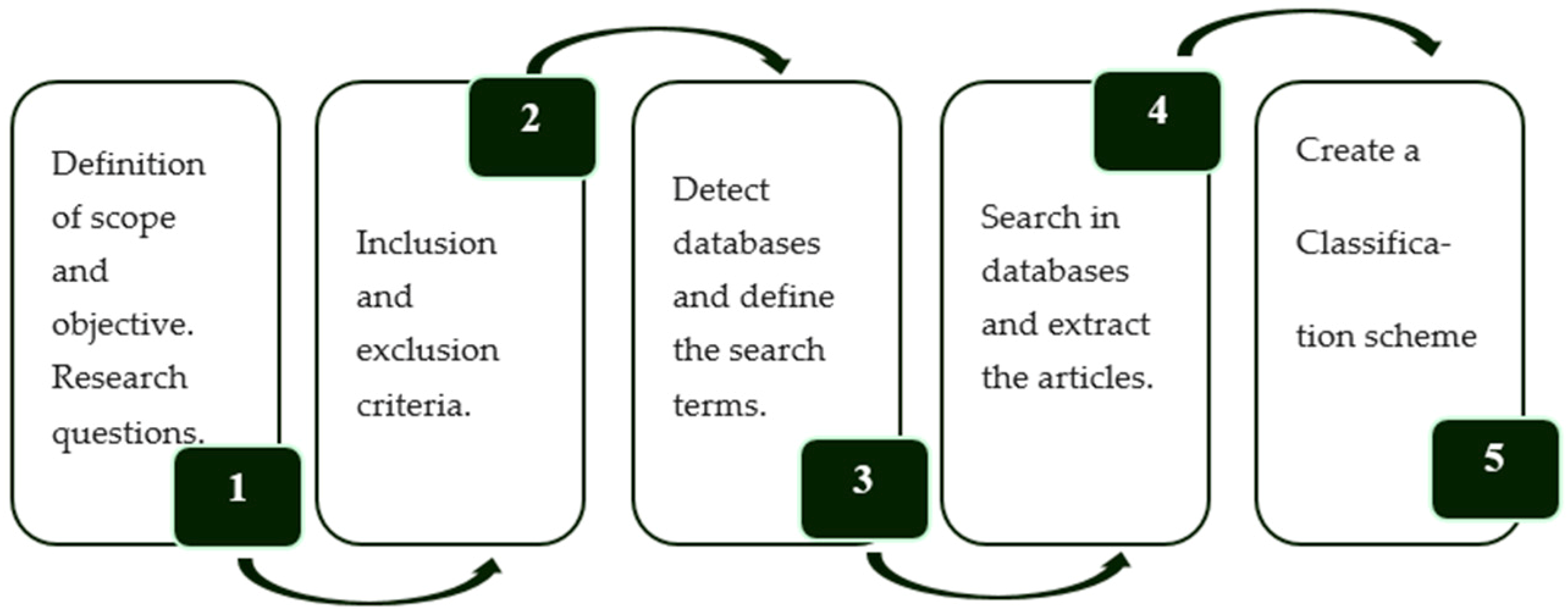
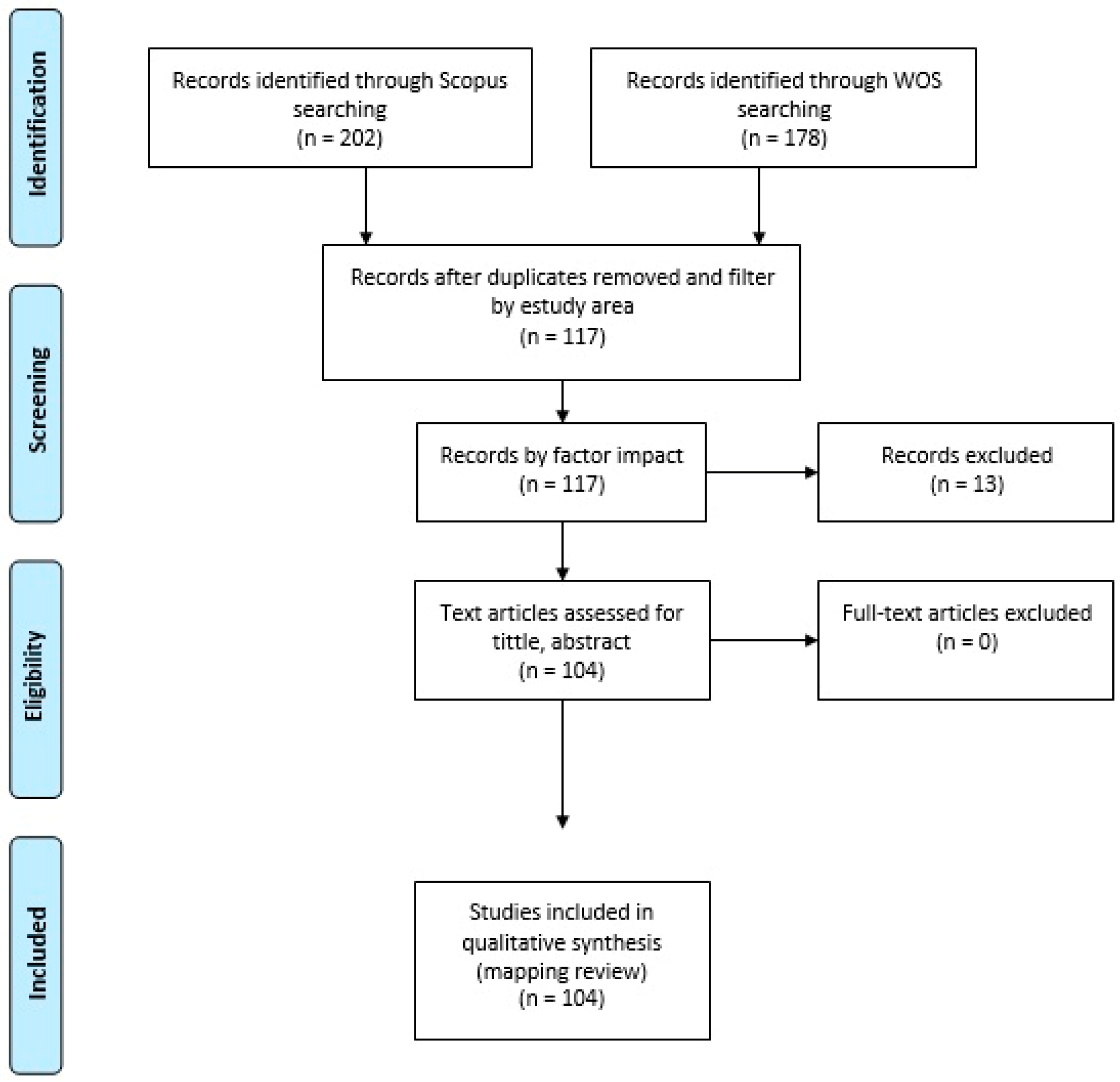
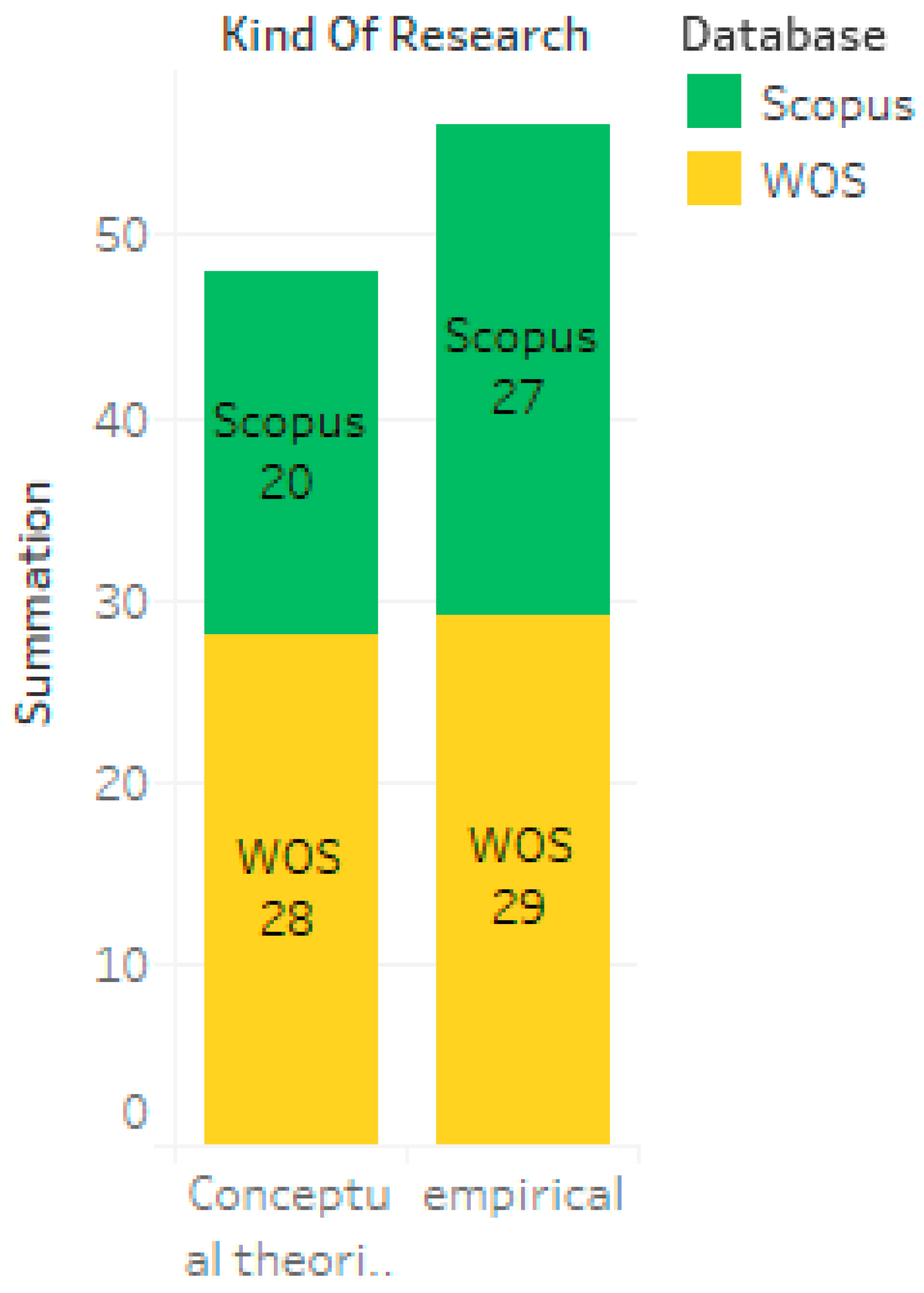
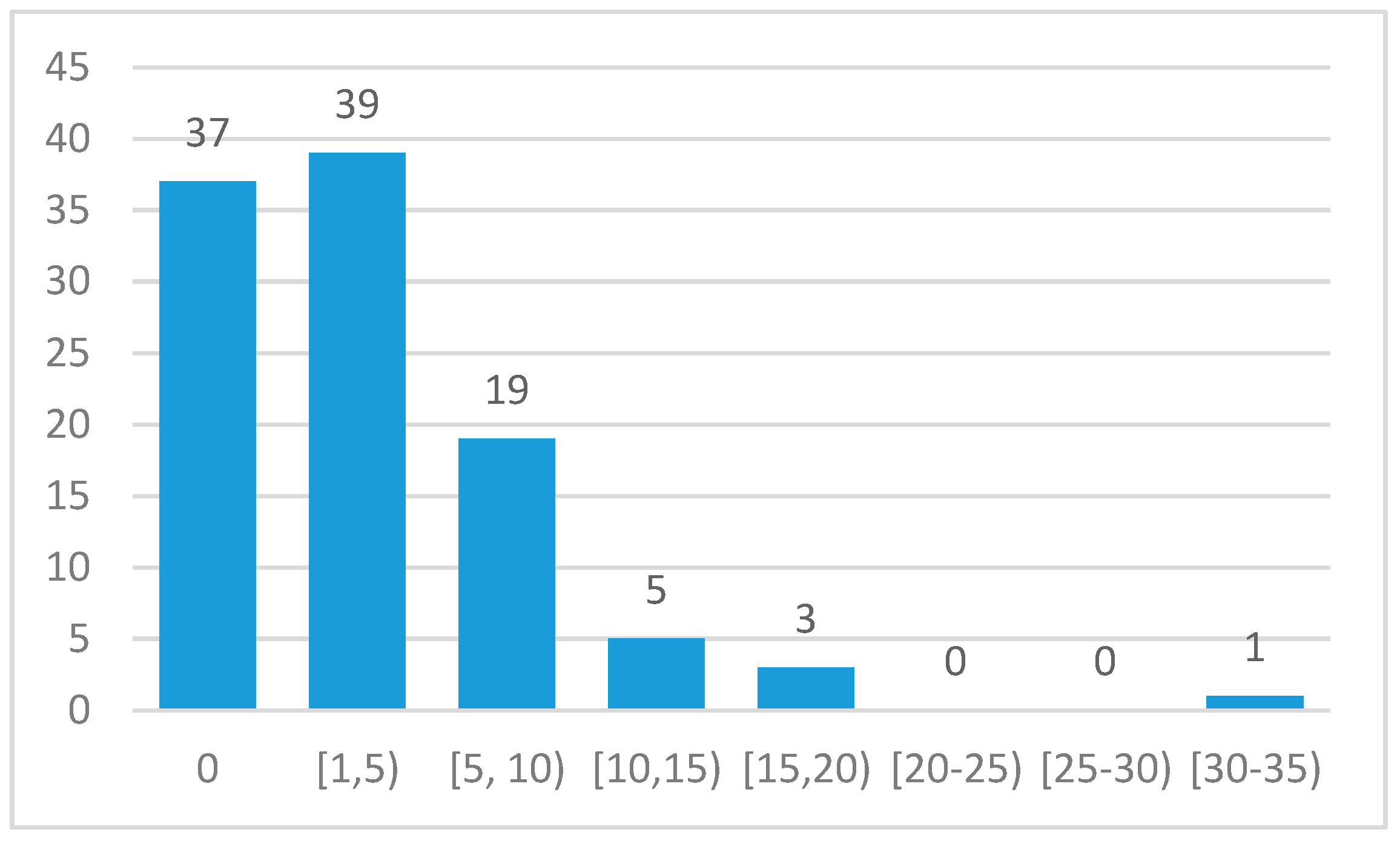
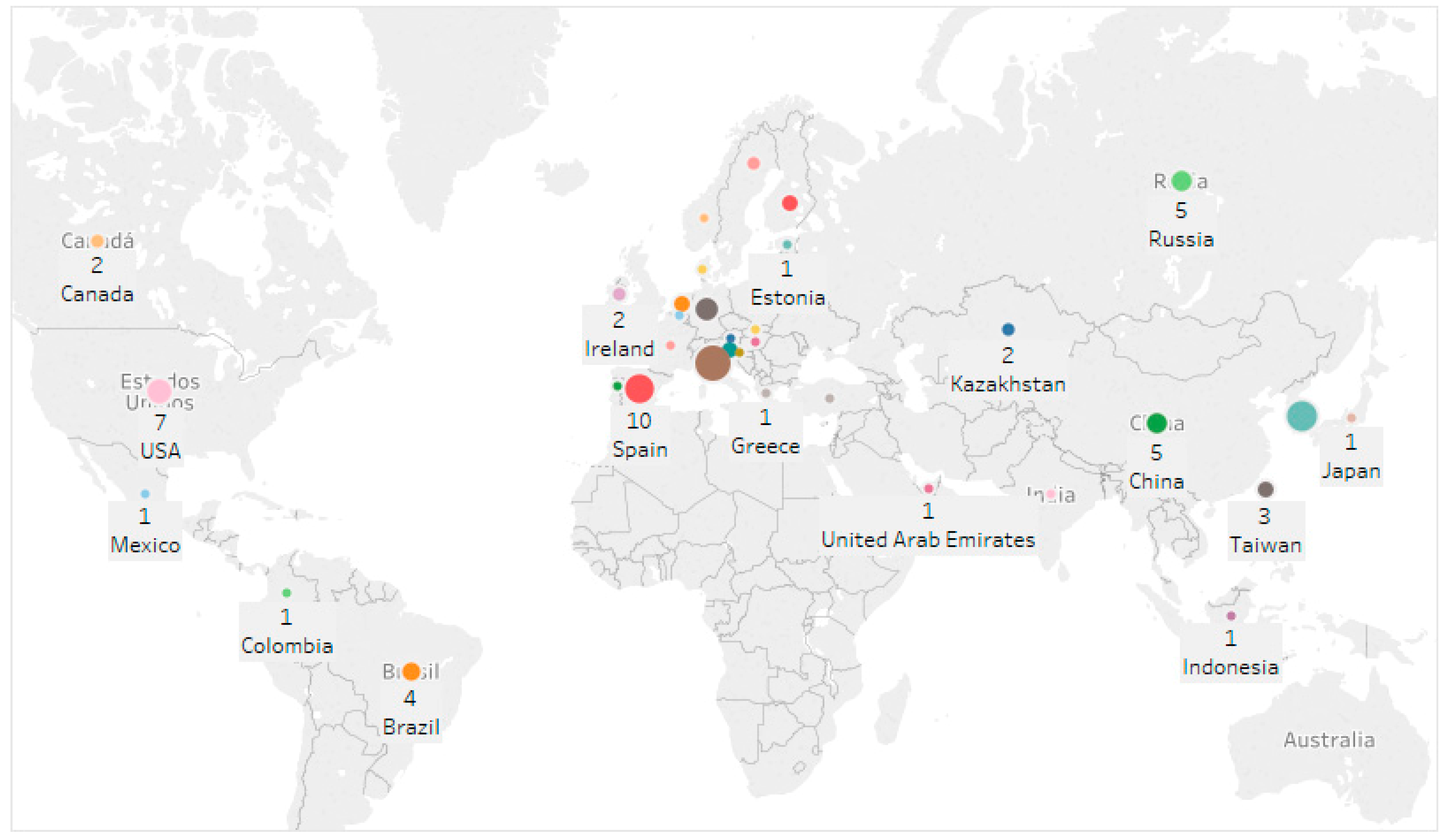
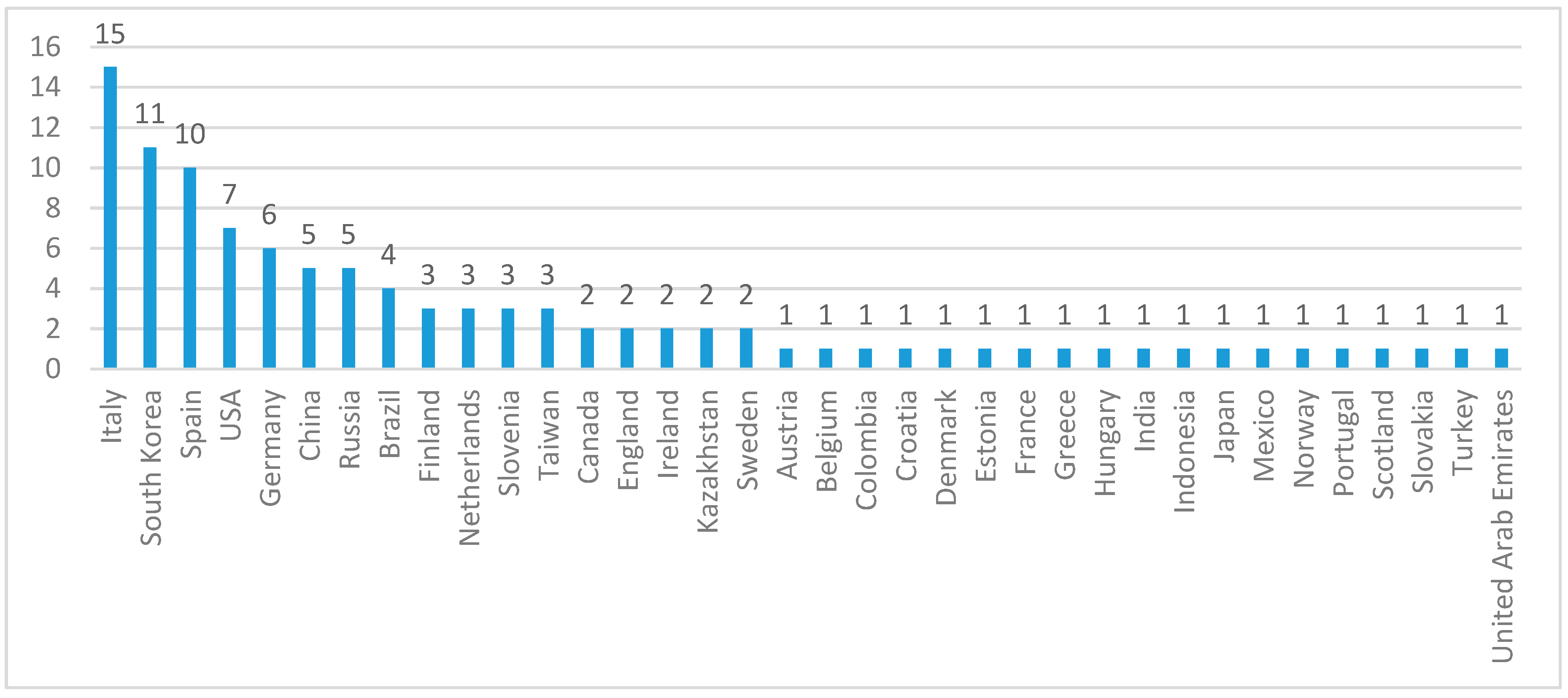
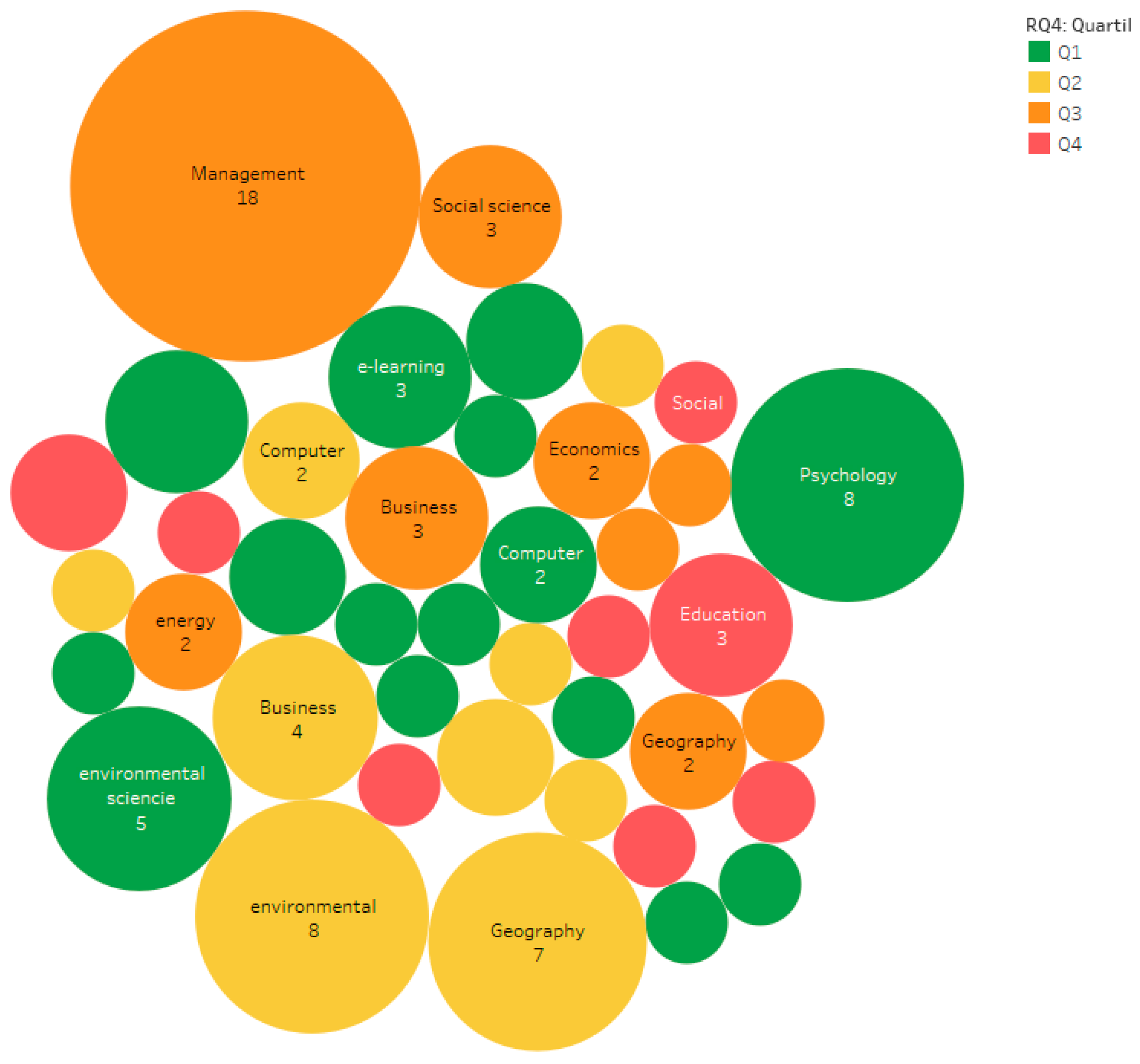
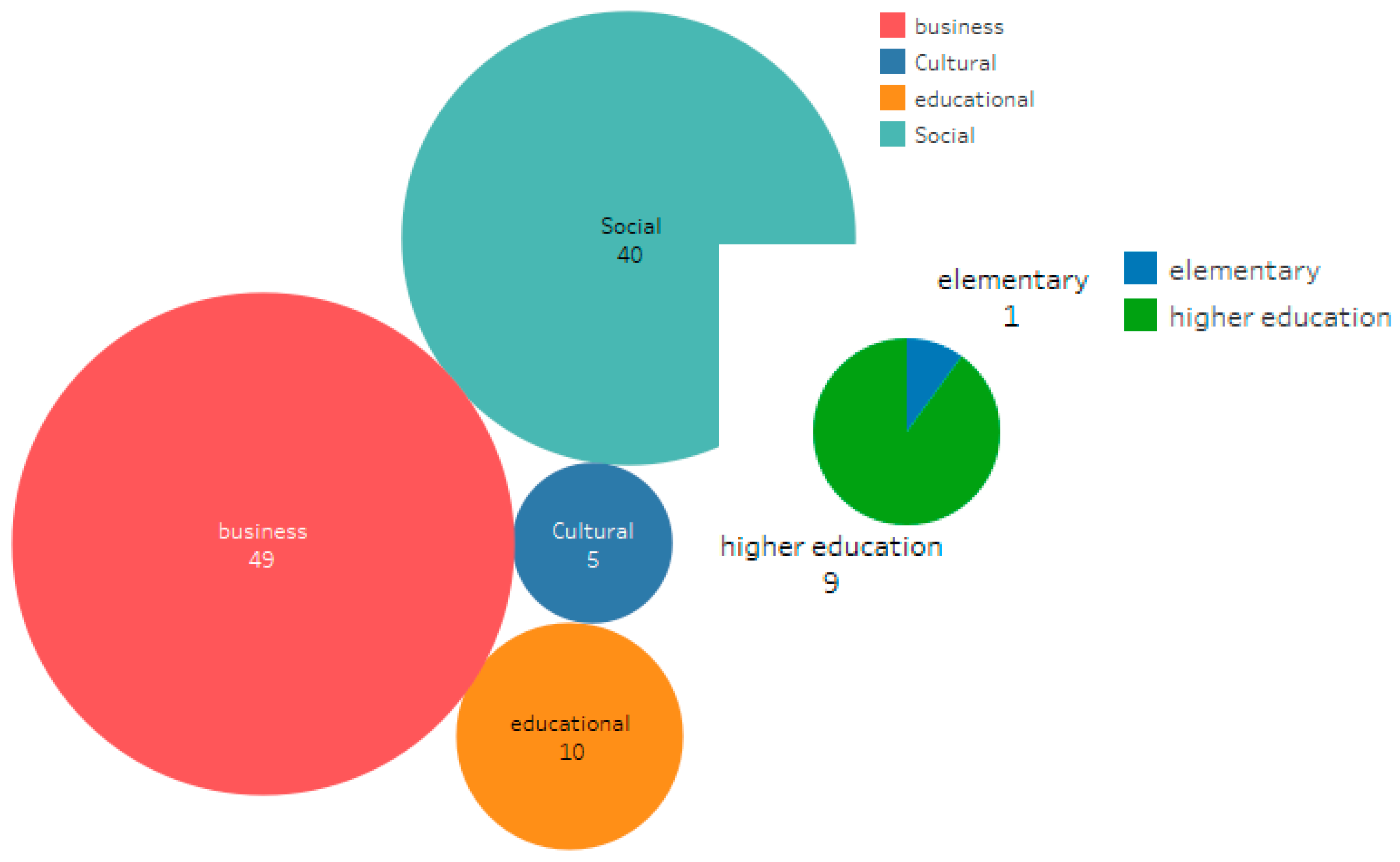
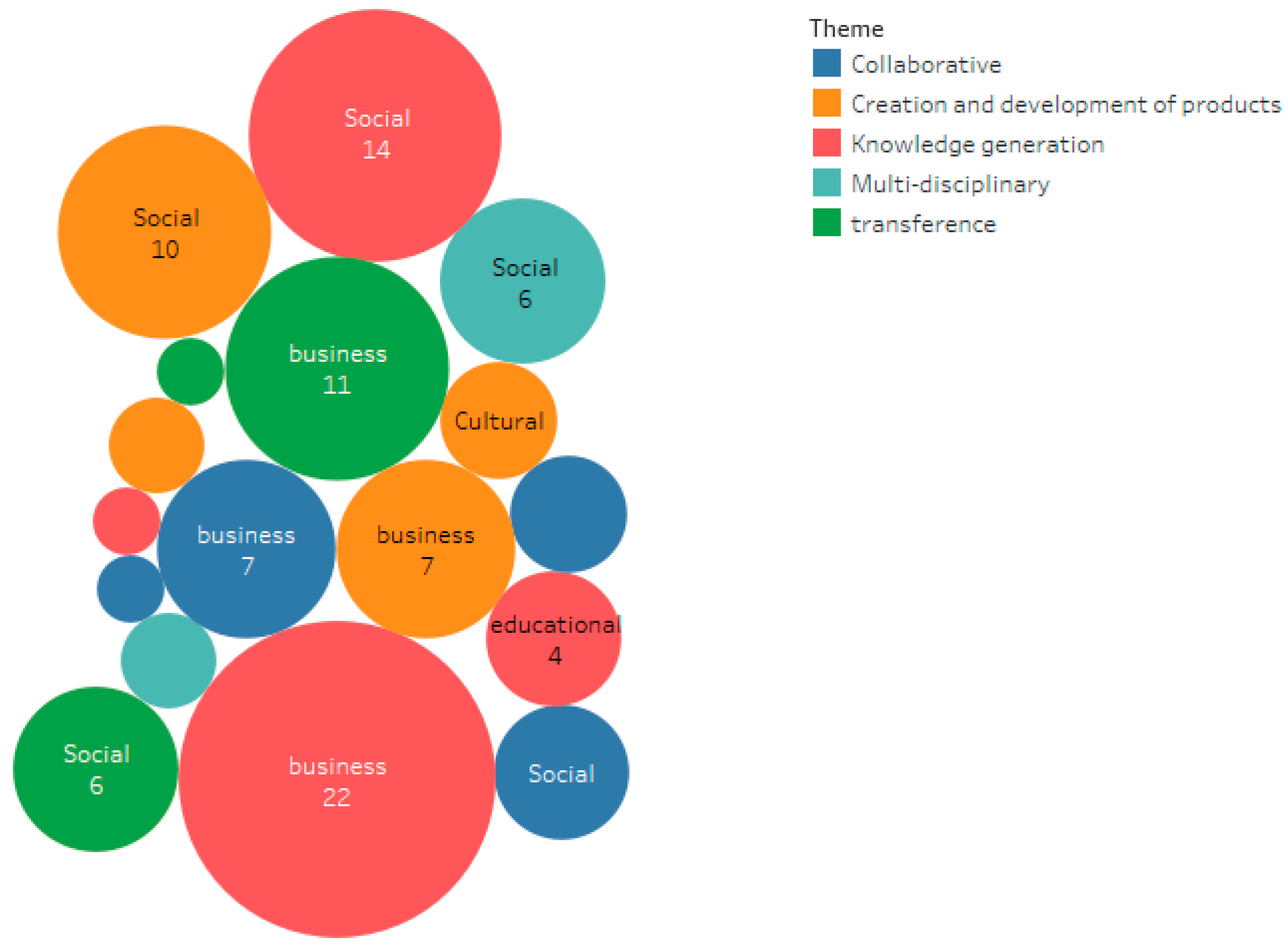
| Question | Type of Response Sought |
|---|---|
| RQ1: How many studies are in the WOS and Scopus databases from 2015 to 2018? | Number of articles in Scopus Number of articles in WOS Number of duplicated articles Number of theoretical-conceptual articles Number of empirical scientific articles |
| RQ2: Who are the authors of the most cited articles? | Most cited authors Most cited articles |
| RQ3: What is the geographical distribution of the authors? | Countries where the authors are from |
| RQ4: What are the journals with more publications on this line of research? | Journals Q1, Q2, Q3 or Q4 |
| RQ5: In what contexts are these studies developed? | Social Empresarial Cultural Educational (Academic) |
| RQ6: What are the main topics addressed in this line of research? | Categories on emerging topics Scientific production tendencies on the topics |
| Inclusion Criteria | Exclusion Criteria | Quality Criteria |
|---|---|---|
| Studies on open innovation in the WOS and Scopus databases. | Studies that do not address open innovation. | A contribution of valuable information regarding open innovation. |
| Scientific articles. | Speech documents, book chapters, ESCI. | Coherence between the objective, method, and results. |
| Articles published in high-impact journals. | Articles that have not been published in high-impact journals. | |
| Articles published during 2015– 2018. | Articles not published during 2015–2018. | |
| Articles related to the training field. | Articles not related to the training field. | |
| Articles on studies related to sustainability. |
| Search String in Scopus | Search String in WOS |
|---|---|
| (TITLE-ABS-KEY (‘Open innovation’) AND TITLE-ABS-KEY (educ*) OR TITLE-ABS-KEY (knowledge) OR TITLE-ABS-KEY (capacities) OR TITLE-ABS-KEY (competences) OR TITLE-ABS-KEY (learning)) AND DOCTYPE (ar) AND PUBYEAR > 2014 AND (LIMIT-TO (SUBJAREA, ‘SOCI’) OR LIMIT-TO (SUBJAREA, ‘ENER’) OR LIMIT-TO (SUBJAREA, ‘PSYC’) OR LIMIT-TO (SUBJAREA, ‘MULT’)) | SUBJECT: (‘open innovation’) AND SUBJECT: (‘educ*’ OR ‘learning’ OR ‘competences’ OR ‘capacities’ OR ‘knowledge’) Refined by: TYPES OF DOCUMENTS: (ARTICLE) AND PUBLICATION YEAR: (2018 OR 2017 OR 2016 OR 2015) AND WEB OF SCIENCE CATEGORIES: (SOCIOLOGY OR COMMUNICATION OR PSYCHOLOGY APPLIED OR HUMANITIES MULTIDISCIPLINARY OR MULTIDISCIPLINARY SCIENCES OR ENERGY FUELS OR GREEN SUSTAINABLE SCIENCE TECHNOLOGY OR EDUCATION EDUCATIONAL RESEARCH OR SOCIAL SCIENCES INTERDISCIPLINARY OR PSYCHOLOGY MULTIDISCIPLINARY OR PSYCHOLOGY SOCIAL) Period of time: Last five years. Indices: BKCI-S, BKCI-SSH, SCI-EXPANDED, ESCI, A&HCI, SSCI, CPCI-SSH, CPCI-S. |
| Categories | Description |
|---|---|
| Knowledge generation | Studies that mention trend research, approach on strategic areas, talent support for research, intellectual property. |
| Creation and development of products | Studies on new products or services, new centers, research centers, development of ideas, people and companies, open innovation laboratories, venture and transformation laboratory, makerspace collaborative design, products, community innovation laboratory, public policies, community initiatives, social transformation projects, operational specialization and customer involvement in product creation. |
| Transference | Studies related to contributions to companies, the government, NGOs, educational institutions and society, capital, professionals, start-ups, business innovation, business models, innovation in government and society, the link between companies and universities, social impact. |
| Multidisciplinary | Studies related to methodologies on open resources for the development of software, involvement in several disciplines, external developers: (a) suppliers and customers, (b) universities, the government and private laboratories, (c) competitors, (d) other countries. |
| Collaborative | Studies stating the co-construction of knowledge, which alters the subjects and disciplines involved, as well as the new knowledge diffusion tools, collaboration networks among subjects, internal agents, suppliers, customers, competitors, consultants and universities, networking. |
| Number of Citations | Cited Articles |
|---|---|
| 34 | 100 |
| 18 | 83 |
| 17 | 67 |
| 16 | 60 |
| 14 | 50 |
| 13 | 45. |
| 10 | 8, 63. |
| 9 | 11, 72, 77. |
| 8 | 36, 41. |
| 7 | 90. |
| 6 | 5, 26, 29, 35, 65, 81, 87, 102. |
| 5 | 6, 15, 56, 76, 82. |
| 4 | 25, 47, 54, 62, 98. |
| 3 | 49, 57, 61, 69. |
| 2 | 12, 21, 38, 44, 46, 59, 66, 84, 85, 95, 96, 99. |
| 1 | 1, 2, 9, 22, 27, 28, 30, 33, 34, 51, 52, 64, 68, 71, 78, 91, 92, 104. |
| 0 | 3, 4, 7, 10, 13, 14, 16, 17, 18, 19, 20, 23, 24, 31, 32, 37, 39,40, 42, 43, 48, 53, 55, 58, 70, 73, 74, 75, 79, 80, 86, 88, 89, 93, 94, 97, 101. |
| Journal | Database | Quartile | Number of Articles | Article Identification Number |
|---|---|---|---|---|
| Technology Analysis & Strategic Management | WOS | Q3 | 17 | 103, 11. 41, 26, 87, 6, 15, 21, 38, 66, 27, 33, 52, 68, 20, 86, 93. |
| Sustainability | WOS-Scopus | Q2 | 13 | 25, 47, 49, 59, 96, 9, 22, 51. |
| Technological Forecasting and Social Change | Scopus | Q1 | 8 | 67, 50, 90, 29, 35, 2, 91, 7. |
| Journal of Cleaner Production | WOS-Scopus | Q1 | 7 | 100, 8, 81, 85, 28, 34, 13. |
| Government Information Quarterly | Scopus | Q1 | 3 | 83, 102, 78. |
| Economy of Region | Scopus | Q2 | 2 | 98, 40. |
| Group Decision and Negotiation | WOS | Q3 | 2 | 46, 48. |
| Industry and Higher Education | WOS | Q3 | 2 | 3, 18. |
| Información Tecnológica | Scopus | Q3 | 2 | 62, 57. |
| International Journal of Technology Management | Scopus | Q2 | 2 | 10, 97. |
| Technology in Society | WOS-Scopus | Q2 | 2 | 74, 101. |
| Quartile | Articles | Total |
|---|---|---|
| Q1 | 100, 83, 67, 60, 50, 45, 8, 36, 90, 29, 35, 81, 102, 56, 76, 61, 84, 85, 99, 1, 2, 28, 34, 78, 91, 7, 13, 19, 32, 48, 70, 75, 89. | 33 |
| Q2 | 63, 72, 5, 82, 25, 47, 98, 49, 69, 59, 96, 9, 22, 51, 10, 14, 23, 24, 31, 40, 42, 43, 53, 74, 79, 94, 97. | 27 |
| Q3 | 103, 11, 77, 41, 26, 65, 87, 6, 15, 62, 57, 12, 21, 38, 46, 66 95, 27, 30, 33, 52, 68, 92, 3, 18, 20, 37, 58, 73, 80, 86, 88, 93. | 33 |
| Q4 | 54, 44, 64, 71, 104, 4, 16, 17, 39, 55, 101. | 11 |
© 2019 by the authors. Licensee MDPI, Basel, Switzerland. This article is an open access article distributed under the terms and conditions of the Creative Commons Attribution (CC BY) license (http://creativecommons.org/licenses/by/4.0/).
Share and Cite
García-González, A.; Ramírez-Montoya, M.-S. Systematic Mapping of Scientific Production on Open Innovation (2015–2018): Opportunities for Sustainable Training Environments. Sustainability 2019, 11, 1781. https://doi.org/10.3390/su11061781
García-González A, Ramírez-Montoya M-S. Systematic Mapping of Scientific Production on Open Innovation (2015–2018): Opportunities for Sustainable Training Environments. Sustainability. 2019; 11(6):1781. https://doi.org/10.3390/su11061781
Chicago/Turabian StyleGarcía-González, Abel, and María-Soledad Ramírez-Montoya. 2019. "Systematic Mapping of Scientific Production on Open Innovation (2015–2018): Opportunities for Sustainable Training Environments" Sustainability 11, no. 6: 1781. https://doi.org/10.3390/su11061781
APA StyleGarcía-González, A., & Ramírez-Montoya, M.-S. (2019). Systematic Mapping of Scientific Production on Open Innovation (2015–2018): Opportunities for Sustainable Training Environments. Sustainability, 11(6), 1781. https://doi.org/10.3390/su11061781






